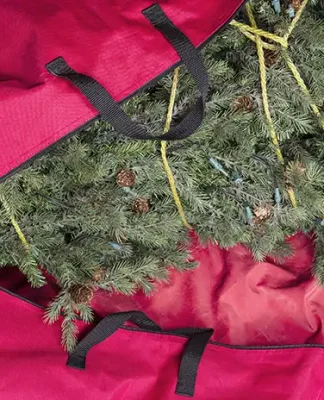When you think about moving, the first things that usually comes to mind are boxes, packing tape, and a moving van. However, if you own large appliances and plan to take them with you to your new home, you’ll need a strategy. Large appliances like washing machines, dryers, stoves, and refrigerators can be a hassle to move, but there are steps to make the process easier. To help, we’ll go over everything you need to know about moving your refrigerator safely and without damaging it.
Hiring Professionals to Move a Refrigerator
Refrigerators are extremely heavy. On average, they weigh about 250 pounds. Some may be slightly lighter, while others can weigh up to 300 pounds. Regardless, moving your fridge is not an easy task. It can get even more difficult if you live in a walk-up apartment or have an existing injury that makes it risky to lift heavy objects. Therefore, the best approach to moving a refrigerator is to work with a reputable moving company who has experience with large appliances.
A moving company tends to have the equipment necessary to move a refrigerator safely and without causing damage to it. Although it is possible to move a fridge on your own under some circumstances, it’s usually best to leave it to the professionals. However, professional movers aren’t always in the budget. So, if you’re going to move a refrigerator on your own, there are a few crucial things to know.
Essential Tools for Moving a Refrigerator
Before you get started, take some time to make sure that you have everything you need to move a refrigerator from point A to point B. One of the most important items you should obtain is an appliance dolly that’s equipped with straps. This will help you safely move the fridge and decrease the amount of strain on your back or legs. You should also get some moving blankets to protect the refrigerator during the move, along with measuring tape, a drill or screwdriver, and some tape or rope. Unless you’re transporting a mini fridge, always make sure at least two people are involved. You should never try to move a refrigerator on your own.
10 Steps for Moving a Refrigerator
Once you’ve gathered all your supplies and enlisted a friend or two, you can start the process of moving a refrigerator. You may not need your friends right away, so make sure you communicate with them in advance about your actual moving day.
1. Prepare Your Fridge for Moving
The first thing you’ll need to do is prepare your fridge for the move. This should include cleaning taking out all the food, drinks, condiments, or anything else inside. You can move them to a cooler until your fridge is ready at your new place. Next, thoroughly clean the inside of the fridge and start the defrosting process. You can either let the fridge defrost on its own for a few days or use a hairdryer to remove ice from the freezer area. Have plenty of towels ready to soak up excess water.
2. Disconnect the Refrigerator
Once defrosted, follow the manufacturer’s instructions on how to disconnect your refrigerator. You’ll need to disconnect it from the power source along with any water lines it’s been hooked up to. To make this process easier on moving day, try to disconnect the water line ahead of time. Follow the manufacturer’s instructions for both the power and water to avoid damaging the fridge, then keep the cords protected by taping them to the appliance.
You’ll have to defrost and disconnect your refrigerator on your own, regardless of if you’re moving it yourself or hiring professionals. If you’re tackling the move on your own, you can also take off the refrigerator doors or make sure they’re secured close using rope or bungee cords. Keep all the small parts in a labeled bag.
3. Take Measurements and Plan
Next, take measurements of your refrigerator. You’ll want to know the height, width, and length so you can determine the best plan of action for getting it out of your home and into the moving truck. Once you have the measurements, check the size of your door frames, and try to figure out the best way to get the appliance out of your house.
4. Create a Clear Pathway
With your plan of action ready to go, it’s time to clear a pathway. You may need to take a door or two off its hinges for the fridge to fit through the space. Prepare for an easy transition by doing this before the appliance is mobile. Depending on your home, you may also need to remove railings, furniture, or other obstacles that block your path from point A to point B.
5. Secure the Fridge to the Dolly
Only once you’ve checked your plan and cleared a path should you prepare to move the fridge. To do this, slide it out from its location in your kitchen. Once you’ve gotten it away from the wall, have one person slightly lift with their knees to bring a side of the refrigerator off the ground. The other person should then slide the dolly underneath the fridge so that it’s loaded on its side, not the front or back. This can help ensure the narrowest side is towards the door frames. Once it’s on the dolly, use the straps to secure it in place.
6. Proceed to Move the Refrigerator with Care
Next, slowly tilt the refrigerator slightly back so that the dolly can be moved. Keep it above a 45-degree angle, as anything less than that can damage the appliance by shifting the chemicals and refrigerants. If you feel secure, start to walk along your predetermined path. Take breaks as you need them and try not to rush this process. If you need to go down any stairs, make sure there’s one person in front of the fridge and one behind it to gently guide the fridge down your steps slowly, taking them one at a time. Keep the dolly angled back as you move down to help maintain more control over this process.
9. Transfer the Fridge into a Moving Truck
Once you get to the moving truck, it’s time to transfer the fridge to the inside. The best way to do this is using either a plank or a slanted surface. Many moving trucks are equipped with ones that pull out of the truck floor.
8. Secure the Refrigerator
After getting the fridge into the moving truck, take the time to position it against one of the walls and use the moving straps inside the truck to secure it. You should keep the refrigerator upright, but it can remain on the dolly if both are secured. This can make the second half of moving a bit easier.
9. Keep Packing and Drive with Care
With the refrigerator in place, continue the packing process and load your moving truck with the rest of your belongings. When you’re ready to go, just make sure that you drive slowly and with care to avoid any of your items falling over or getting damaged during transit.
10. Allow the Fridge to Settle
Moving your refrigerator can cause the fluids within the appliance to shake up. To make sure that the refrigerants settle, give your fridge a few hours before you plug it back in. This will reduce the risk of damage and help ensure that it returns to full working order. Once you plug it in, check the manufacturer’s instructions before adding food or drinks. Most refrigerators need about 24 to 72 hours to reestablish a temperature that’s safe for food storage.
Refrigerators are expensive and can be tricky to move, but if you’re careful and take the precautions mentioned above, you should be able to get it from point A to point B. If your new home already has a refrigerator but you don’t want to get rid of yours, rent a self-storage unit from The Lock Up Self Storage. We offer self-storage units that are temperature controlled and protected by security features like perimeter alarms, CCTV, and unique, individual access codes. With a range of sizes, our storage units provide you with all the extra storage space you need. Plus, with every new self-storage unit rental, The Lock Up offers a free moving truck and free locks. Each of our trucks feature a 12-foot box with blankets and dollies, free of cost. Although the use of a moving truck is subject to reservation and self-storage location, it’s a great way to help offset costs and aid in your move. To find a facility near you, contact The Lock Up today at 1-866-327-LOCK or find a unit online.



















